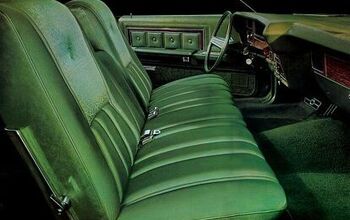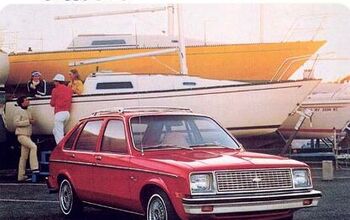Just What Assets Does Fisker Have to Buy?

The Fisker Karma’s battery pack and drivetrain, supplied by Quantum Technologies
The Department of Energy today is auctioning off the paper for the $192 million it loaned to Fisker Automotive as part of the Advanced Technology Vehicles Manufacturing loan program. An obvious question is why would anyone want to buy that debt? Many of the press reports about the sale say that by purchasing the debt, a buyer could ultimately gain control of Fisker’s assets including intellectual property, like the extended range hybrid drivetrain and controls thereof. While Fisker may indeed have assets with some value, I’m not sure that anyone’s going to spend at least $30 million, the minimum bid required by the DoE, to be able to duplicate the Fisker Karma’s drivetrain.
I can understand why Bob Lutz, either participating or not with Wanxiang, would want access to the Karma’s design as he’s apparently had no problem selling every LS9 powered Destino, based on the Karma, that he and his business partners have been able to build. Henrik Fisker is a talented designer so it wouldn’t be too surprising if the Fisker Karma survives the Fisker car company. The Karma could become a latter day Graham-Paige Hollywood or Nate Altman era Avanti II. For their part, Wanxiang might prefer that Fisker stays intact and resumes production. Wanxiang already bought battery maker A123, which supplied the Karma, so they have an interest in keeping the startup automaker alive.
Quantum Aggressor, which features a hybrid drivetrain
It’s conceivably possible that if Fisker owned something novel in the way of electric drivetrains or control systems for EVs and hybrids, that might be a way of acquiring the latest EV or hybrid tech on the cheap. Control systems for hybrids are not inexpensive to develop. Seamlessly integrating gasoline engines and electric motors is not easy. At the recent Toyota Hybrid World Tour, the point was made that software was the most expensive part of the Prius’ development. For pure electric vehicles, motor control, regenerative systems and battery management all require complex software to operate properly. To save money on EV development, Toyota itself has a partnership with Tesla, who provide motors and battery packs for the electric version of the RAV4. Still, I have to wonder if Fisker Automotive owns any EV or hybrid technology that’s worth risking $30 million. That’s because Fisker doesn’t own the technology behind the Karma’s drivetrain.
Quantum Aggressor’s “Q Force” drivetrain, note the similarities to the Karma’s “Q-Drive”
Fisker itself doesn’t own much in the way of EV or hybrid technology. Fisker’s “ Q-Drive” serial hybrid drivetrain was developed and exclusively supplied by Fisker partner Quantum Technologies. As a matter of fact, Fisker Automotive came into being as the result of a chance meeting at a Range Rover dealership between Henrik Fisker and Quantum Technologies CEO Alan Niedzwiecki, which led to a lunch for the two men in early 2007. General Motors had just announced the concept for the Chevy Volt, which for the most part operates as a serial hybrid, electric drive plus a range extending on-board gasoline engine to drive a generator to power the electric motors. Quantum had developed a similar drivetrain for the U.S. military. When Henrik Fisker told Niedzwiecki of his plans to design gasoline cars built in China, the Quantum CEO said, “Why don’t you design a car around my drivetrain?” Fisker responded by saying “Let’s start a company!”
Quantum was the exclusive supplier of the Karma’s drivetrain, which uses a GM sourced Ecotec four cylinder gasoline engine to power the car’s generator. A Quantum affiliate also supplied Fisker with the photovoltaic roof on the Karma, that kept the parked car ventilated on sunny days and theoretically could extend range on sunny days by a few miles.
As a result of all of this, it’s unlikely that anyone could put the Karma back into production without the active cooperation of Quantum. It’s also unlikely that anyone is going to risk $30 million to have access to technology that another company owns and controls.
Ronnie Schreiber edits Cars In Depth, a realistic perspective on cars & car culture and the original 3D car site. If you found this post worthwhile, you can get a parallax view at Cars In Depth. If the 3D thing freaks you out, don’t worry, all the photo and video players in use at the site have mono options. Thanks for reading – RJS

Ronnie Schreiber edits Cars In Depth, the original 3D car site.
More by Ronnie Schreiber
Latest Car Reviews
Read moreLatest Product Reviews
Read moreRecent Comments
- Kwik_Shift_Pro4X Thankfully I don't have to deal with GDI issues in my Frontier. These cleaners should do well for me if I win.
- Theflyersfan Serious answer time...Honda used to stand for excellence in auto engineering. Their first main claim to fame was the CVCC (we don't need a catalytic converter!) engine and it sent from there. Their suspensions, their VTEC engines, slick manual transmissions, even a stowing minivan seat, all theirs. But I think they've been coasting a bit lately. Yes, the Civic Type-R has a powerful small engine, but the Honda of old would have found a way to get more revs out of it and make it feel like an i-VTEC engine of old instead of any old turbo engine that can be found in a multitude of performance small cars. Their 1.5L turbo-4...well...have they ever figured out the oil dilution problems? Very un-Honda-like. Paint issues that still linger. Cheaper feeling interior trim. All things that fly in the face of what Honda once was. The only thing that they seem to have kept have been the sales staff that treat you with utter contempt for daring to walk into their inner sanctum and wanting a deal on something that isn't a bare-bones CR-V. So Honda, beat the rest of your Japanese and Korean rivals, and plug-in hybridize everything. If you want a relatively (in an engineering way) easy way to get ahead of the curve, raise the CAFE score, and have a major point to advertise, and be able to sell to those who can't plug in easily, sell them on something that will get, for example, 35% better mileage, plug in when you get a chance, and drives like a Honda. Bring back some of the engineering skills that Honda once stood for. And then start introducing a portfolio of EVs once people are more comfortable with the idea of plugging in. People seeing that they can easily use an EV for their daily errands with the gas engine never starting will eventually sell them on a future EV because that range anxiety will be lessened. The all EV leap is still a bridge too far, especially as recent sales numbers have shown. Baby steps. That's how you win people over.
- Theflyersfan If this saves (or delays) an expensive carbon brushing off of the valves down the road, I'll take a case. I understand that can be a very expensive bit of scheduled maintenance.
- Zipper69 A Mini should have 2 doors and 4 cylinders and tires the size of dinner plates.All else is puffery.
- Theflyersfan Just in time for the weekend!!! Usual suspects A: All EVs are evil golf carts, spewing nothing but virtue signaling about saving the earth, all the while hacking the limbs off of small kids in Africa, money losing pits of despair that no buyer would ever need and anyone that buys one is a raging moron with no brains and the automakers who make them want to go bankrupt.(Source: all of the comments on every EV article here posted over the years)Usual suspects B: All EVs are powered by unicorns and lollypops with no pollution, drive like dreams, all drivers don't mind stopping for hours on end, eating trays of fast food at every rest stop waiting for charges, save the world by using no gas and batteries are friendly to everyone, bugs included. Everyone should torch their ICE cars now and buy a Tesla or Bolt post haste.(Source: all of the comments on every EV article here posted over the years)Or those in the middle: Maybe one of these days, when the charging infrastructure is better, or there are more options that don't cost as much, one will be considered as part of a rational decision based on driving needs, purchasing costs environmental impact, total cost of ownership, and ease of charging.(Source: many on this site who don't jump on TTAC the split second an EV article appears and lives to trash everyone who is a fan of EVs.)




































Comments
Join the conversation
The "auction" is being conducted like a sale, not a banging gavel event. It was probably started now because the shutdown may be over by the time a winner is announced. We ARE talking about a government-conducted process. Everything I've read stated that Fisker owns design patents, probably on every aspect of the Karma's design so nobody can come up with a look-alike. They probably have a separate set of patents for the design of the Atlantic that was to be built in Delaware, and possibly for several future models. That might possibly be worth $30 million, but that's the minimum bid, and with multiple bidders, the cost of acquiring control of the company is going to be higher than that. The bottom line is Fisker has SOMETHING several bidders want, and the process is going to take awhile before a winning bid is awarded.
Some missing details here. Is the paper secured, and if so, by what? If it's secured by all of the IP, then someone who buys the paper and forecloses on it gets the IP. Otherwise, I would imagine all of this would get sorted out in a bankruptcy proceeding. Uncle Sam is not, I'm sure, the only person who whom Fisker Automotive owes money. Then there's the question . . . brought up in the original article . . . as to what value there is to the IP that Fisker owns, as opposed to what it had the right to license from Quantum or whomever.